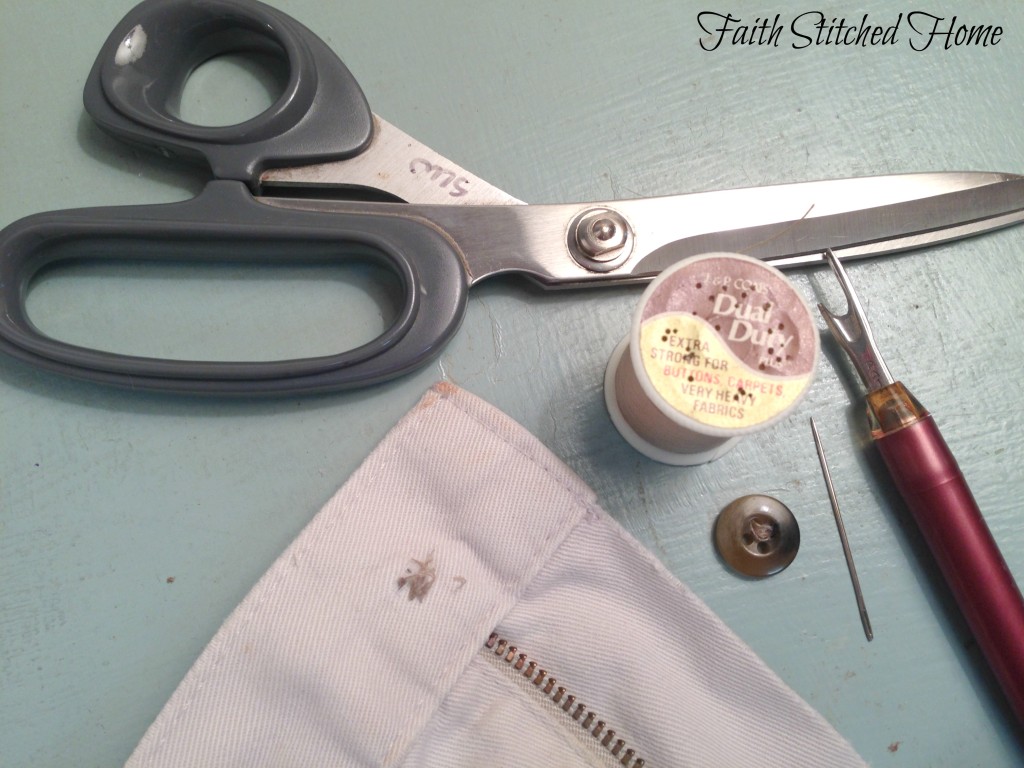So you want to start sewing and don’t know what all you will need.
You really only need just a few basic supplies.
Here are my suggestions:
- A good pair of scissors is a top priority. Whether you think you will become a serious seamstress or not, investing in a good pair of scissors is a good idea. Be sure they feel comfortable in your hand. Above all, dedicate your scissors strictly to sewing. Never ever cut anything but fabric and thread with your sewing scissors.
- A seam ripper – yes, you will need a seam ripper! It doesn’t matter how long you have been sewing, this tool will serve you well. No seamstress, however experienced, is ever exempt of making mistakes and this little baby is a life saver. Be sure to have one in your stash.
- An iron, you say? Indeed, an iron is one of the biggest necessities for a seamstress. I keep an ironing board and iron right next to my sewing machine at the ready. It is very important to press your work as you sew. It can mean the difference in a good or a bad finished product.
- A measuring tool is obviously a necessity. Pictured above is a dressmaker tape and a seam marker. I use my seam marker a lot. I highly recommend that beginners invest in one as they are most helpful. It helps when marking and checking your seam allowances and hemming.
- Speaking of marking, its great to have a non-permanent marking tool on hand. I’ve shown dressmaker chalk and a water soluable marker. The white chalk is good for marking dark fabrics. It also comes in handy for marking hems so you don’t run the risk of your pins falling out when the garment is taken off. The water soluable marker is good for lighter fabrics. It makes a clear mark that will not come off (unlike chalk) unless you dampen the fabric.
- Dressmaker pins are a must. Personally I like long ones; no real reason why, just easier to pick up maybe. Mine above are gathered onto a magnetic pin dish. I had always used a pincushion until just a few years ago when a friend gifted this one to me and now I cannot live without it. When removing pins in a hurry, you can practically just toss them at the pin dish and it grabs them. Also if you drop a pin on the floor and can’t find it, just wave the pin dish over the area it was dropped and it will find the pin. Additionally, a good set of needles (sometimes called “sharps”) in varied sizes is always a good investment for your sewing box.
- A few spools of basic color threads is great to have on hand. I always have white, black, and beige. Of course its great to have a matching thread for you project fabric. Those three colors come in handy in a pinch. And I tend to be in a pinch on a regular basis, but that is a whole other post.
- While not a necessity, I threw a thimble into the mix because it can sure save the fingers. Get one if you like, or not, totally up to you.
If you’re just beginning and not sure whether a lot of sewing is in your future, I would suggest you find a very basic and inexpensive sewing machine. A machine with the most basic stitches will work fine. You might even look for one at a thrift store or on Craigslist. Sometimes a sewing machine repair shop might have some old ones for sale.
Now, go buy your supplies and get started on your sewing journey. I’m here to help any way that I can. Any questions, so far?
xo, Faith




